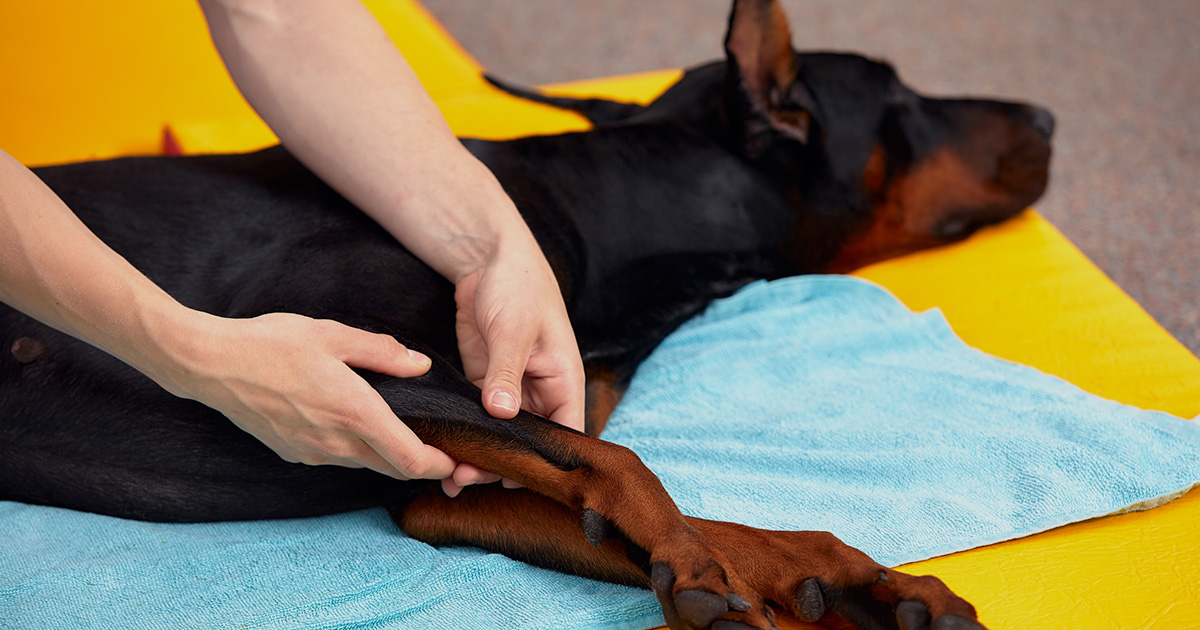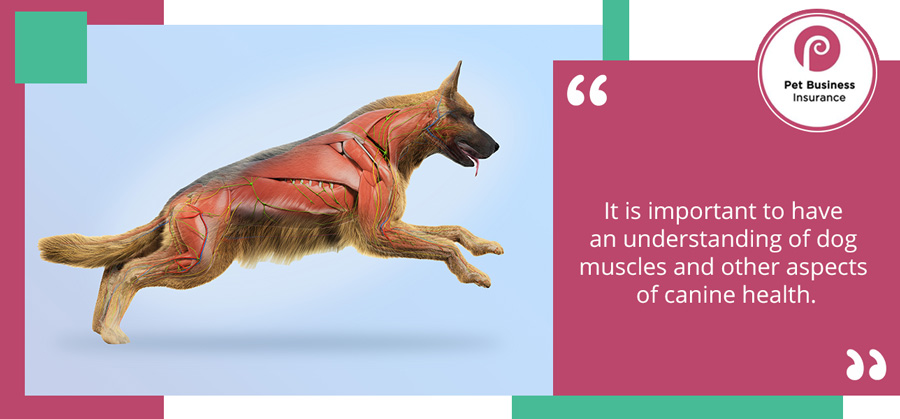
Becoming a dog massage therapist is an interesting career that will appeal if you love canine company and enjoy being hands-on with animals. This post examines how to become a dog massage therapist, and the responsibilities associated with the job.
What is a dog massage therapist?
Much like a human massage therapist, a dog massage therapist uses manual techniques to manipulate soft tissue, which can help with and prevent a range of canine physical health issues.
The treatment may not just be focused on a specific area; it is usually a whole-body treatment.

What qualifications do you need to be a canine massage therapist?
While you are not legally required to have any qualifications, it is important to know what you are doing.
In addition to understanding the muscular structure of a dog, it is important to be aware of other aspects of dog health, anatomy, and physiology. Negligence or a lack of knowledge could result in unintentional harm to a client’s pet.
It is important to note that it is against the law to treat an animal without first having the permission of the animal’s vet (unless you are the pet’s owner).
A vet is unlikely to give permission or refer dogs to a massage therapist who has no professional qualifications. They will also want to know that you are insured.
Several dog massage therapy qualifications are available. It is worth doing some research into these as they can cover slightly different aspects of therapy. It is also useful to know how long the courses are and what qualifications you will receive.
The Level 3 Diploma in Canine Massage is a popular gateway to understanding the necessary theory and safe practical application of technique. To enrol on a course with a learning provider, you will need to be 16 and over and have Level 2 Maths and English.
The Canine Massage Guild, a UK organisation which registers dog massage professionals, will not accept therapists without qualifications. Bear in mind that membership of a professional organisation can be a strong indication of reliability for potential clients.

How do I set up as a dog massage therapist?
Once you’re qualified you may want to work with a vet or another dog massage therapist to get some more experience. Alternatively, you may wish to set up on your own.
If you set up your own business, you will need to decide whether you will work at suitable premises, offer mobile therapy at your clients’ premises, or both. Wherever you decide to work, you will need a calm environment with space to massage dogs undisturbed.
You will also need to ensure your business is correctly set up. This means deciding whether to operate as a sole trader, limited company, or partnership.
You will also need to register with HMRC for tax, and make sure you have a system in place for booking clients and managing appointments, as well as invoicing and taking payments.
Finally, you will need to think about how you are going to attract clients. You will probably need to become acquainted with at least one local vet. However, you should consider a range of marketing options to raise your profile. These could include:
- starting your own website
- distributing business cards
- leveraging social media
Do dog massage therapists need insurance?
You will need pet business insurance to safeguard different aspects of your work. Should something occur which results in a claim against you, any order for costs will be covered.
For many pet business professionals, it’s always important to have:
- public liability insurance: covers you for a claim from a third party if something your business does causes harm or damage to property. This is especially important if you work in public areas or have clients present where you work.
- pet accidents and injuries to animals insurance: covers your liability for an injury to an animal in your care. This is important, as you will be in a position where a dog could potentially be harmed by accident.

Your insurance should also include cover for potential issues and risks that may arise while working as a therapist. Some examples that should be included as standard are:
Optional additions to your policy may also be needed, depending on your business’ circumstances. For example, if you employ anyone – even part-timers or volunteers – you will need employers’ liability insurance.
Reliable dog massage therapist insurance providers
Finding an insurer you can trust, and who understands your work, is an important factor when deciding what insurance to choose for your business.
For almost two decades, Pet Business Insurance have continued to be leaders in the provision of insurance for small- and medium-sized pet businesses across a range of industries, including dog massage therapy.
To learn more about insurance for dog massage therapists, get in touch with our friendly and knowledgeable team today. Call Pet Business Insurance on 01284 736 874 or complete our online online enquiry form.